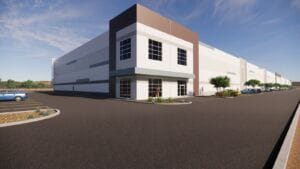Positive job growth. Hundreds of new residents moving into the state each day. Sound fundamentals. Pent up demand for rental housing. Based on those facts, the projection for Arizona’s multifamily industry in 2020 is that it’s likely to experience another banner year, experts predicted at the 2019 AMA Perspectives & Projections industry outlook conference in September at the Hyatt Regency Phoenix.
A packed room of industry leaders listened to experts from several disciplines including research, data, finance, technology and the national outlook.
“You are in one of the best markets in the multifamily industry,” said opening speaker Tim Sullivan, Senior Managing Principal with Meyers Research. “While the economy is growing, it’s doing so slowly. Where does housing fall into this?
“What worries me so much is the perception of what’s happening. Fundamentally, what’s going on is sound. But consumers hear the ‘R’ (recession) word, get frightened, and keep money in their pockets. Arizona is in a very positive place,” Sullivan said.
He added that tariffs are likely to have an impact in 2020. Sullivan said we could be heading into “if not a recession, a slow down.”
“Uncertainty gives people pause,” he said. “There is a little less elasticity.”
His benchmark:
“Look at RV sales. That will tell you how the market is doing. If they’re slow, it’s kind of a precursor to a recession. Things generally have slowed.”
A positive benchmark – in-migration:
“That’s why I love this market,” he said. “You are fortunate to have in-migration. You’re getting people moving in making $60,000 to start and not ready to buy a home right away. They want to live in a cool apartment. This is a hot bed for single-family rental.”
Sullivan’s predictions:
• Demographics support his prediction. While Millennials comprise a great number of those living in apartment communities, they don’t want to stay renters forever;
• The demand for apartments will continue to be very strong;
• The economy will continue to grow if we remove uncertainty;
• The 2020 election is a wild-card no one knows about.
“You guys are in a great place,” Sullivan reiterated.
State of the national multifamily industry
Mike Clow, Executive Director Real Estate Services for Greystar Real Estate Partners and the 2019 National Apartment Association Chair, listed story lines that have affected the national apartment industry in 2019: moderate growth and solid fundamentals.
Nationally, the pipeline remains robust, Clow said. Year over year rent growth is at about 3.3 percent. Rent growth in Phoenix “topped the charts” at 6 percent.
“The U.S. Census shows that Arizona is one of the top five fastest-growing states,” he said. “Older renters are now driving apartment renters. Looking ahead, to meet demand, nationally we will need to build 4.6 million new units between now and 2030.”
Affordable housing, Clow said, could be the storm in an otherwise sunny forecast.
“Affordability has become one of the most prom discussions across the country,” he said. “It’s in almost every conversation thread. More people are cost burdened. Income has not increased as rents have increased. Housing policy is being driven by a generation of leaders with no experience in policy.”
On the contentious topic of rent control, Clow was equally concerned.
“It’s affecting ROI and the industry. Litigations. Fees. Evictions. Ask someone in Oregon or California how they handle evictions.”
Technology revolutionizing the industry
The technology panel, moderated by Scott Hines of PEM Real Estate Group, covered everything from smart buildings that include electric vehicle chargers to AI components that do things for us.
The panel featured Rep. Jeff Weninger, Legislative District 17, Arizona House of Representatives; Guillermo Rivas, National Director, New Build & Major Accounts, Cox Communications; Brad Long, Executive Vice President, LeaseHawk; and Demetrios Barnes, COO, SmartRent.
“From the research that we’ve done – and we’ve done a lot – residents really want to be assured that when they move in, they are getting the technology they want today and that it will still be there in the future,” Rivas said.
On the topic of artificial intelligence (AI), Long predicts the industry will see AI more often in the near future.
“Alexa. Siri. Machines will help us go about the daily business,” Long said. “For leasing agents, it includes conversation systems. For residents, it includes smart appliances.”
On the Legislative side, Weninger discussed his 2019 PropTech sandbox bill which was modeled after Arizona’s FinTech sandbox bill from 2018. The sandbox bills enable a participant to obtain limited access to Arizona’s market to test innovative property technology and financial products or services without first obtaining full state licensure or other authorization that otherwise may be required.
Arizona’s future is bright
Thanks to what Arizona did in response to the economic downturn a decade ago, Glenn Hamer, President and CEO of the Arizona Chamber of Commerce & Industry, said he likes the direction in which the economy is going.
“Tax reform, competitive packages and regulatory reform helped us prepare for a modern economy (after the Great Recession),” Hamer said. “This state is leading the way in job creation; we’re even a state where there are more jobs than we can fill. Affordable housing is a big piece of that. We must create an economy where people can find work and employers can fill their needs.”
Looking ahead to 2020, Hamer said a healthy Arizona economy will depend on a health care initiative to additional education funding to a rollback of reform to protect ballot integrity.
Market and investment trends
Michael Cohen, Vice President, Advisory Services for CoStar Group shared why the Arizona apartment market is outperforming the U.S. market and why.
“A dearth of workers can strain an economy,” he said. “Right now, everyone is adding jobs, but not as fast as before. Even in Tucson, we’re seeing an uptick. We’re seeing renters by choice; people who want high quality in a good location. However, we’re also seeing a lack of workforce and affordable housing.”
Overall, Cohen said, Phoenix is a leader in more favorable trends. Net migration is about 73,000 people a year. That’s 200 moving to Phoenix each day.
“That’s a big driver of apartment demand,” Cohen said. “The revival of downtown Phoenix as a live-work-play destination is another driver of demand. Right now, there are 3,800 units under construction. Of four active multifamily submarkets, downtown Phoenix has 40 percent of the Valley supply.”
In discussing investment trends, Mark Dewane, Senior Vice President at RBC Wealth Management, said global trends driving demographics.
“They’re driving what we do,” he said. “And it’s helping us think outside the box.”
He stressed watching money movements, healthcare changes and technology. Debt is the biggest problem. Tech is pricey – if it delivers.
“There are incredible opportunities in Arizona,” he said. “There are great headwinds.”




